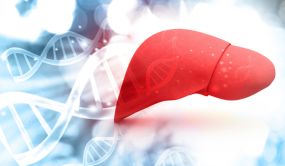Silent Signs Of Lung Cancer: Depression, Fingertip Changes, And Other Symptoms You Might Miss

You do not smoke, and you do not have a persistent cough: so you might think lung cancer is not your concern. But think again. While smoking remains the leading cause of lung cancer deaths, about 20% of people diagnosed have never touched a cigarette. Spotting early signs is crucial, yet many symptoms are so subtle they are easy to miss.
People with lung cancer may experience a persistent cough, repeated chest infections, coughing up blood, breathlessness, chest pain, constant fatigue, and unexplained weight loss. While these are the common signs people typically associate with lung cancer, we are going to explore the silent warnings the body may send that are often easy to overlook.
Face and Neck Swelling: Lung cancer patients can develop tumors near the superior vena cava, a large vein that carries deoxygenated blood from the head, neck, upper limbs, and torso back to the heart. This complication, known as superior vena cava syndrome, occurs when the tumor presses against the vein and nearby lymph nodes, causing blood to back up and resulting in swelling in the face and neck.
Mental Health Symptoms: Studies have shown that people who were later diagnosed with lung cancer often developed mental health issues such as confusion, anxiety, and depression. These symptoms could be caused by tumors affecting the brain, the impact of cancer on the immune system or hormones, or high calcium levels related to cancer.
Finger clubbing: Finger clubbing is a notable yet often overlooked symptom associated with lung cancer. It occurs when certain lung tumors produce hormone-like substances that increase blood flow and fluid accumulation in the fingertips, leading to their enlargement. This condition is characterized by rounded, bulging fingertips and nails that may appear shiny or curve more than usual.
Stomach Problems: It is estimated that around 40% of lung cancer patients develop tumors that release substances that could disrupt normal calcium levels. Excessive calcium in the blood affects digestion and causes stomach cramps, nausea, and constipation.
Shoulder and back pain: Not all lung cancers affect the respiratory system. For example, a Pancoast tumor is a type of lung cancer that grows in the upper part of the lung and can spread to the ribs, vertebrae, nerves, and blood vessels. This type of lung cancer can cause pain in the shoulder blade, upper back, and arm.
Early detection of lung cancer:
The survival rate for lung cancer largely depends on how far the cancer has spread at the time of diagnosis. If detected early, when the cancer is still localized, and treated promptly, some lung cancers can go into remission. Therefore, if you experience any symptoms, it's important to consult with a doctor. However, keep in mind that these symptoms may not necessarily indicate lung cancer, as they could be linked to other conditions.
Published by Medicaldaily.com



























